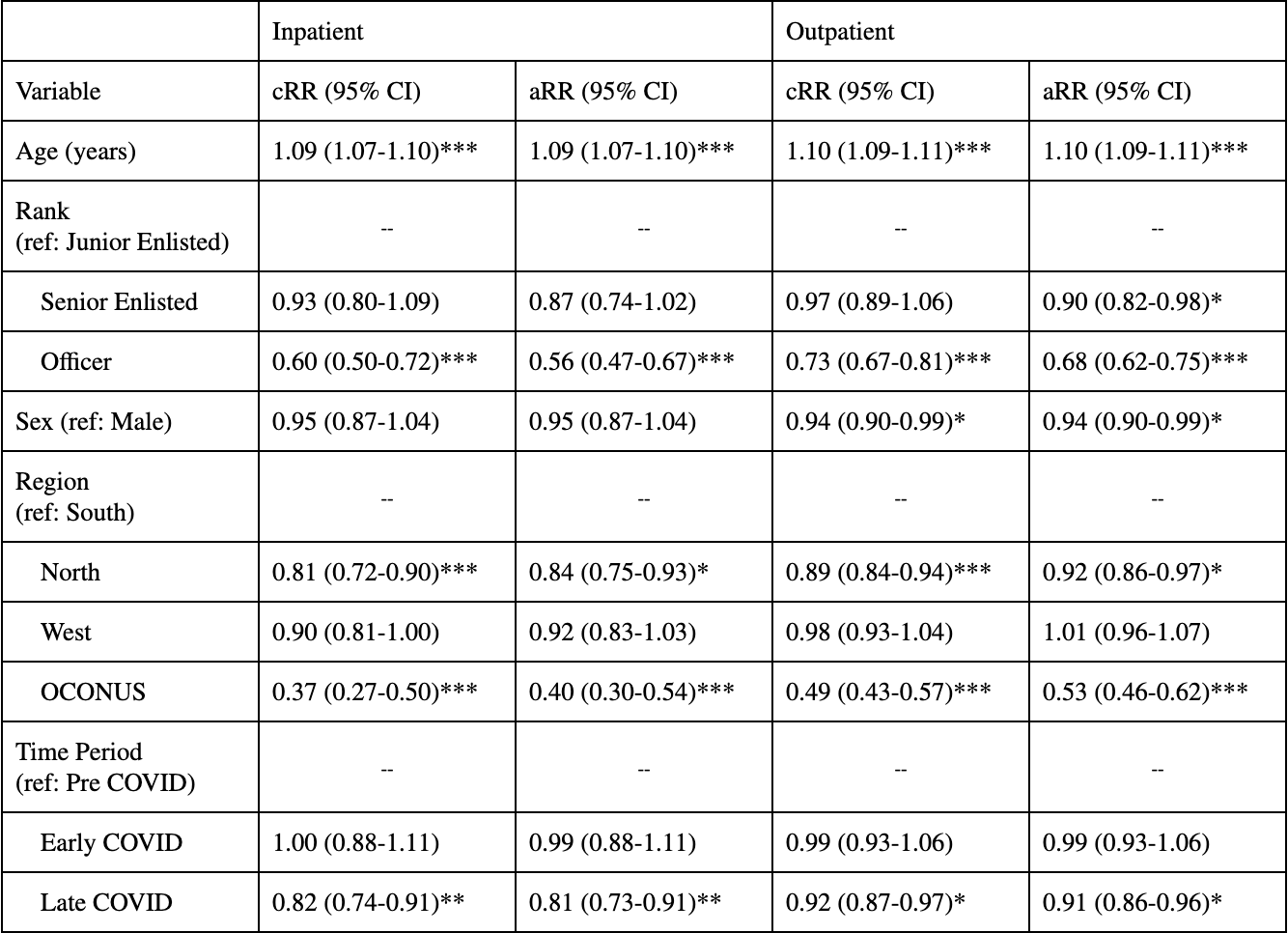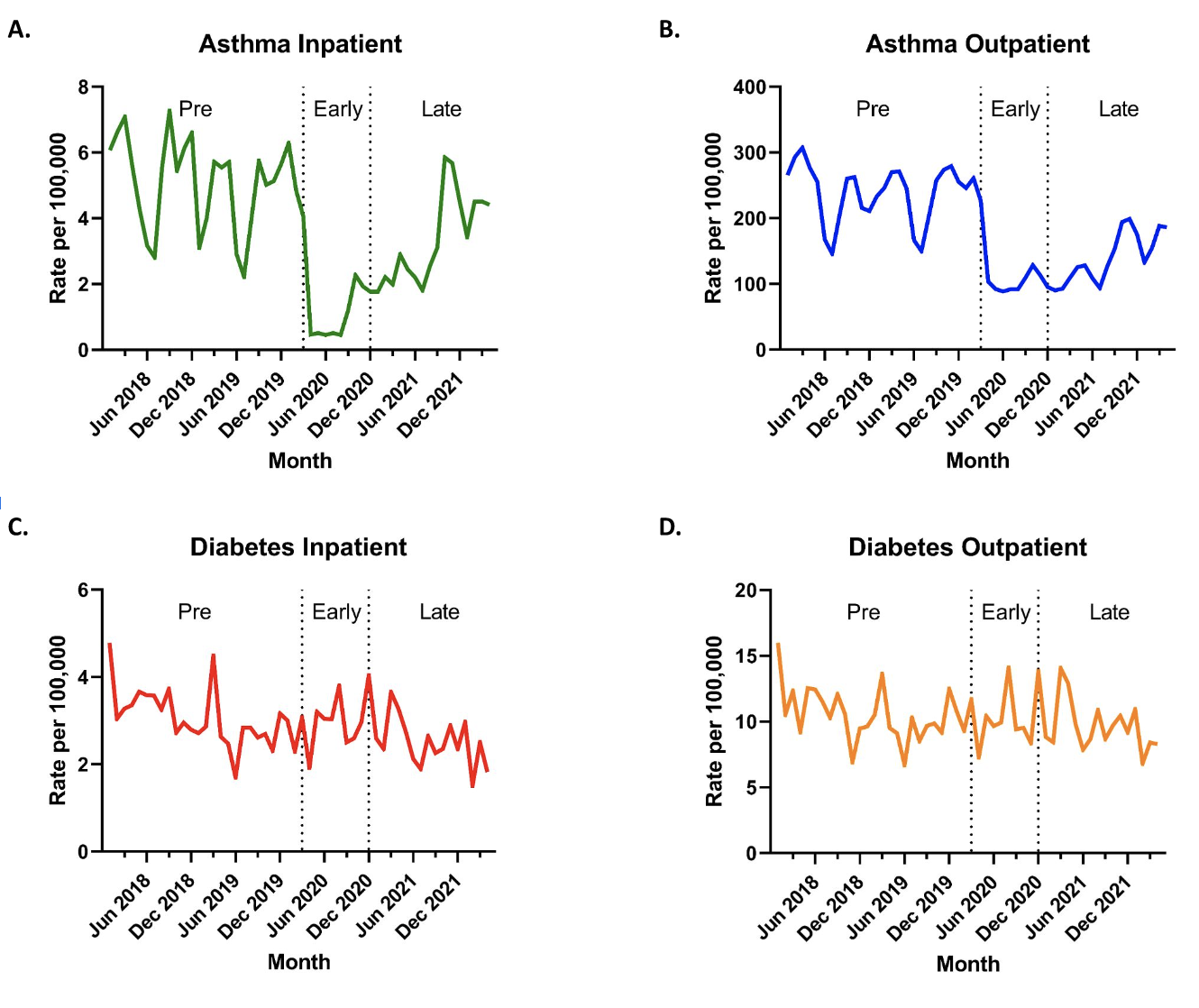Children with Chronic Conditions
Children with Chronic Conditions 3
78 - Comparing Pediatric Chronic Disease Admission Trends Before and During the COVID-19 Pandemic
Publication Number: 78.305

Zoe Solomon, MPH (she/her/hers)
Research Associate
Uniformed Services University of the Health Sciences F. Edward Hebert School of Medicine
Bethesda, Maryland, United States
Presenting Author(s)
Background: During COVID-19, non-COVID-19 pediatric hospital visits for infectious diseases in the United States saw a dramatic decline due to COVID prevention policies. However, data on chronic diseases, both related to COVID (asthma) and unrelated (diabetes), is sparse and could help characterize how COVID-19 impacted care.
Objective: To explore how the pandemic affected pediatric chronic disease service utilization in the Military Health System (MHS), by COVID-related risk.
Design/Methods: This repeat-monthly cross-sectional study utilized MHS billing records to detail the pandemic’s effect on inpatient admissions and outpatient encounters for asthma (2-17 years) and diabetes (6-17 years) during pre-pandemic (Jan 2018 – Feb 2020), early pandemic (Mar 2020 – Dec 2020), and late pandemic (Jan 2021 – Apr 2022) periods. Rates were visits per setting divided by the eligible population. Rates were compared using Poisson regression, adjusting for time period, sex, age, sponsor rank, and region.
Results:
Asthma admissions declined 73.1% and 32.8% from pre-pandemic levels to early pandemic and late pandemic respectively. Asthma outpatient encounters declined 52.3% and 40.8% from pre-pandemic levels to early pandemic and late pandemic respectively. Diabetes admissions and outpatient encounters had no significant change from pre-pandemic levels to early pandemic, but had an 18.6% and an 8.7% decrease respectively to late pandemic. There was no difference in rates between children of senior and junior enlisted sponsor rank. Children of officers had lower rates of admissions compared to junior enlisted. Females had significantly lower rates of asthma visits compared to males and a slightly lower rate of diabetes outpatient encounters, but no difference in admissions.
Conclusion(s): In the MHS, asthma service utilization decreased from pre-pandemic rates as policies led to decreased risk of respiratory infections, although rates began to move towards pre-pandemic levels in the late pandemic period. Unexpectedly, both inpatient and outpatient diabetes service utilization declined, but only in the late pandemic suggesting maintenance of adequate care despite fewer visits. This could reflect delayed care seeking for asthma due to increased COVID-19 rates and maintenance of diabetes care through novel methods, implying inpatient and outpatient visits are not inversely related. Understanding the long-term effects of the COVID-19 pandemic on service utilization and outcomes for chronic pediatric conditions may help future pandemic planning and resource allocation..png)


